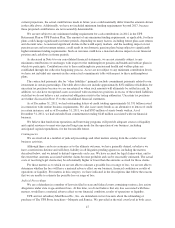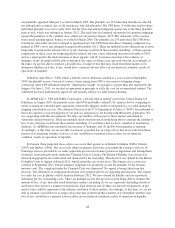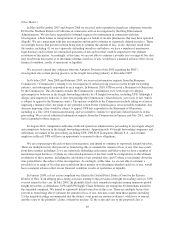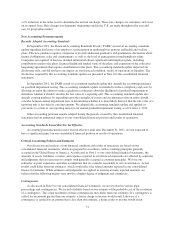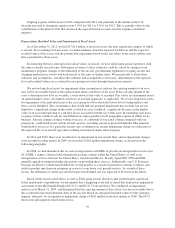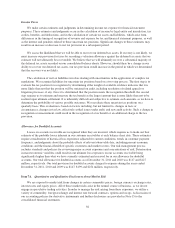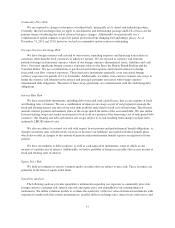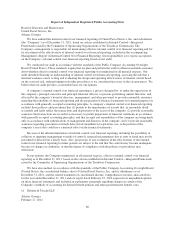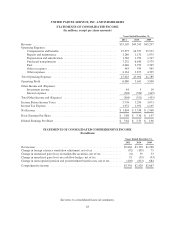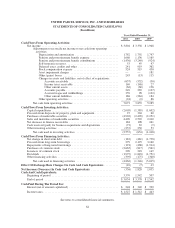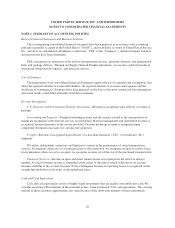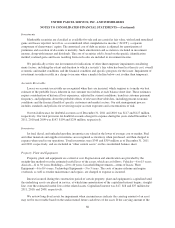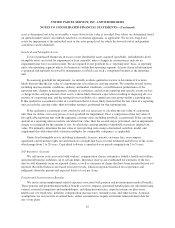UPS 2011 Annual Report Download - page 69
Download and view the complete annual report
Please find page 69 of the 2011 UPS annual report below. You can navigate through the pages in the report by either clicking on the pages listed below, or by using the keyword search tool below to find specific information within the annual report.Commodity Price Risk
We are exposed to changes in the prices of refined fuels, principally jet-A, diesel and unleaded gasoline.
Currently, the fuel surcharges that we apply to our domestic and international package and LTL services are the
primary means of reducing the risk of adverse fuel price changes. Additionally, we periodically use a
combination of option contracts to provide partial protection from changing fuel and energy prices. As of
December 31, 2011 and 2010, however, we had no commodity option contracts outstanding.
Foreign Currency Exchange Risk
We have foreign currency risks related to our revenue, operating expenses and financing transactions in
currencies other than the local currencies in which we operate. We are exposed to currency risk from the
potential changes in functional currency values of our foreign currency-denominated assets, liabilities and cash
flows. Our most significant foreign currency exposures relate to the Euro, the British Pound Sterling and the
Canadian Dollar. We use a combination of purchased and written options and forward contracts to hedge
forecasted cash flow currency exposures. These derivative instruments generally cover forecasted foreign
currency exposures for periods of 12 to 24 months. Additionally, we utilize cross-currency interest rate swaps to
hedge the currency risk inherent in the interest and principal payments associated with foreign currency
denominated debt obligations. The terms of these swap agreements are commensurate with the underlying debt
obligations.
Interest Rate Risk
We have issued debt instruments, including debt associated with capital leases, that accrue expense at fixed
and floating rates of interest. We use a combination of interest rate swaps as part of our program to manage the
fixed and floating interest rate mix of our total debt portfolio and related overall cost of borrowing. The notional
amount, interest payment and maturity dates of the swaps match the terms of the associated debt. We also utilize
forward starting swaps and similar instruments to lock in all or a portion of the borrowing cost of anticipated debt
issuances. Our floating rate debt and interest rate swaps subject us to risk resulting from changes in short-term
(primarily LIBOR) interest rates.
We also are subject to interest rate risk with respect to our pension and postretirement benefit obligations, as
changes in interest rates will effectively increase or decrease our liabilities associated with these benefit plans,
which also results in changes to the amount of pension and postretirement benefit expense recognized in future
periods.
We have investments in debt securities, as well as cash-equivalent instruments, some of which accrue
income at variable rates of interest. Additionally, we hold a portfolio of finance receivables that accrue income at
fixed and floating rates of interest.
Equity Price Risk
We hold investments in various common equity securities that are subject to price risk. These securities are
primarily in the form of equity index funds.
Sensitivity Analysis
The following analysis provides quantitative information regarding our exposure to commodity price risk,
foreign currency exchange risk, interest rate risk and equity price risk embedded in our existing financial
instruments. We utilize valuation models to evaluate the sensitivity of the fair value of financial instruments with
exposure to market risk that assume instantaneous, parallel shifts in exchange rates, interest rate yield curves and
57


